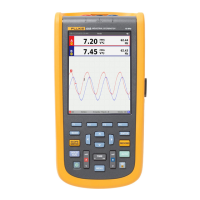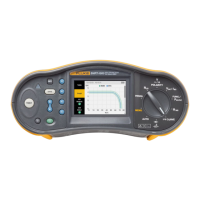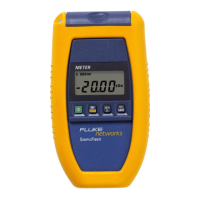
Do you have a question about the Fluke ScopeMeter 196B and is the answer not in the manual?
| Channels | 2 |
|---|---|
| Display | Color LCD |
| Operating Temperature | 0 °C to +50 °C |
| Sample Rate | 1 GS/s |
| Input Impedance | 1 MΩ |
| Battery Life | 4 hours |
| Power Source | Battery and AC power |
| Safety Category | CAT III 600 V |
| Vertical Sensitivity | 2 mV/div to 10 V/div |
| Max Input Voltage | 600 V CAT III |
| Storage Temperature | -20 °C to +60 °C |
| Display Size | 144 mm |
Overview of safety information and guidelines for safe operation.
Essential safety procedures for correct and safe use of the test tool.
Definitions and usage of caution and warning statements for safety.
Explanation of symbols used on the test tool and in manuals.
Procedures when safety of the test tool is likely to be impaired.
General safety information and precautions during servicing.
Introduction to the illustrated list of replaceable parts.
Instructions on how to contact service centers and order replacement parts.
List and ordering codes for final assembly parts of the test tool.
List and ordering codes for parts of the Main PCA Unit.
List of standard and optional accessories available for the test tool.
Introduction to performance tests for ensuring proper operating condition.
List of equipment necessary for performing performance verification tests.
General instructions to follow for all performance verification tests.
Instructions on resetting the tool, navigating menus, and creating setups.
Procedure to test the functionality of the display and backlight.
Tests for accuracy and performance of the scope inputs A and B.
Procedure to test the external trigger level functionality.
Tests for verifying the accuracy of the meter (DMM) functions.
Test to verify the internal probe calibration square wave generator.
General information and requirements for calibration adjustment.
Outline of the steps required for complete calibration adjustment.
Steps to initiate the calibration mode and adjust the date.
Procedure to adjust the display contrast for optimal visibility.
Procedure for test tool warm-up and internal pre-calibration steps.
Steps for the final calibration process, including gain and zero adjustments.
Procedure to save calibration data and exit the maintenance mode.
Procedure to adjust voltage probes for optimal response.
Introduction to the disassembly procedures and required precautions.
Detailed steps for disassembling and reassembling the test tool.











